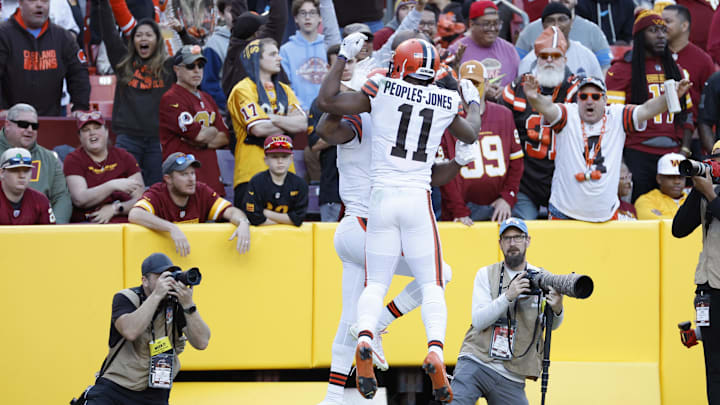The Cleveland Browns have dramatically altered the overall makeup of their wide receiver room this offseason. What should the expectations be for the positional group this season and going forward?
Analyzing the construction of the Browns wide receiver room
While it's often hard to judge where a team feels it's at just going by the words of coaches and general managers, there's usually much more clarity to be gained by judging their actions. In the case of the Browns wide receiver room, their actions speak volumes.
Coming off a disappointing 2022 season, there was a ton of chatter about the Browns shifting their offensive philosophy into becoming a pass-heavy team. In reality, shifting their focus to be centered around an aerial attack was an inevitability, due to the acquisition and investment in quarterback Deshaun Watson.
The first order of business for the front office was to evaluate what they already had in-house at receiver. Then they had to strategize how they could maximize their existing talent and supplement the position with additional talent to give Watson everything necessary to reach his maximum potential.
The evaluation of in-house talent
When evaluating Cleveland's wide receiver room from 2022, one thing becomes painfully obvious, outside of Amari Cooper and Donovan Peoples-Jones, the Browns did not have any receivers that were capable of making game-changing plays.
While Cooper and DPJ are good enough starters on the outside to give any defense fits, beyond the duo, the Browns didn't really have any playable depth at the position to bank on going forward.
Amari made a statement in his first year with the #Browns 👏@AmariCooper9: 78 rec, 1160 yds, 14.9 avg, 9 td pic.twitter.com/Wr90eFt71m
— Cleveland Browns (@Browns) February 24, 2023
Now, while Andrew Berry and Kevin Stefanski could get behind the podium and publicly support their receivers not named Cooper and DPJ, their actions this offseason tell an entirely different story. Outside of David Bell and Michael Woods, who get passes because they were rookies, the Browns receivers have shown little to no promise of developing into NFL caliber receivers.
If the Browns plan on becoming more reliant on the arm of Watson to dictate games, then they could no longer afford to wait on projects like Anthony Schwartz to develop into a weapon. They needed to inject the wide receiver room with speed and dynamic playmaking ability while making sure they had enough differentiating skillsets to round out the positional group.
